Respiratory syncytial virus interferon antagonist NS1 protein suppresses and skews the human T lymphocyte response
- PMID: 21533073
- PMCID: PMC3080852
- DOI: 10.1371/journal.ppat.1001336
Respiratory syncytial virus interferon antagonist NS1 protein suppresses and skews the human T lymphocyte response
Abstract
We recently demonstrated that the respiratory syncytial virus (RSV) NS1 protein, an antagonist of host type I interferon (IFN-I) production and signaling, has a suppressive effect on the maturation of human dendritic cells (DC) that was only partly dependent on released IFN-I. Here we investigated whether NS1 affects the ability of DC to activate CD8+ and CD4+ T cells. Human DC were infected with RSV deletion mutants lacking the NS1 and/or NS2 genes and assayed for the ability to activate autologous T cells in vitro, which were analyzed by multi-color flow cytometry. Deletion of the NS1, but not NS2, protein resulted in three major effects: (i) an increased activation and proliferation of CD8+ T cells that express CD103, a tissue homing integrin that directs CD8+ T cells to mucosal epithelial cells of the respiratory tract and triggers cytolytic activity; (ii) an increased activation and proliferation of Th17 cells, which have recently been shown to have anti-viral effects and also indirectly attract neutrophils; and (iii) decreased activation of IL-4-producing CD4+ T cells--which are associated with enhanced RSV disease--and reduced proliferation of total CD4+ T cells. Except for total CD4+ T cell proliferation, none of the T cell effects appeared to be due to increased IFN-I signaling. In the infected DC, deletion of the NS1 and NS2 genes strongly up-regulated the expression of cytokines and other molecules involved in DC maturation. This was partly IFN-I-independent, and thus might account for the T cell effects. Taken together, these data demonstrate that the NS1 protein suppresses proliferation and activation of two of the protective cell populations (CD103+ CD8+ T cells and Th17 cells), and promotes proliferation and activation of Th2 cells that can enhance RSV disease.
Conflict of interest statement
The authors have declared that no competing interests exist.
Figures
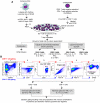
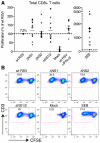

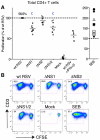
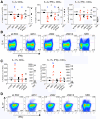
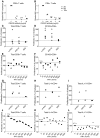
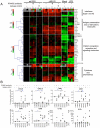
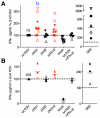

Similar articles
-
Respiratory syncytial virus nonstructural proteins 1 and 2 are crucial pathogenic factors that modulate interferon signaling and Treg cell distribution in mice.Virology. 2015 Nov;485:223-32. doi: 10.1016/j.virol.2015.07.016. Epub 2015 Aug 25. Virology. 2015. PMID: 26298859
-
Type I interferon regulates respiratory virus infected dendritic cell maturation and cytokine production.Viral Immunol. 2007 Dec;20(4):531-40. doi: 10.1089/vim.2007.0057. Viral Immunol. 2007. PMID: 18158727
-
Nonstructural proteins 1 and 2 of respiratory syncytial virus suppress maturation of human dendritic cells.J Virol. 2008 Sep;82(17):8780-96. doi: 10.1128/JVI.00630-08. Epub 2008 Jun 18. J Virol. 2008. PMID: 18562519 Free PMC article.
-
An Unexpected Encounter: Respiratory Syncytial Virus Nonstructural Protein 1 Interacts with Mediator Subunit MED25.J Virol. 2022 Oct 12;96(19):e0129722. doi: 10.1128/jvi.01297-22. Epub 2022 Sep 14. J Virol. 2022. PMID: 36102648 Free PMC article. Review.
-
Respiratory syncytial virus nonstructural proteins 1 and 2: Exceptional disrupters of innate immune responses.PLoS Pathog. 2019 Oct 17;15(10):e1007984. doi: 10.1371/journal.ppat.1007984. eCollection 2019 Oct. PLoS Pathog. 2019. PMID: 31622448 Free PMC article. Review.
Cited by
-
Human respiratory syncytial virus non-structural protein NS1 modifies miR-24 expression via transforming growth factor-β.J Gen Virol. 2015 Nov;96(11):3179-3191. doi: 10.1099/jgv.0.000261. J Gen Virol. 2015. PMID: 26253191 Free PMC article.
-
Reversion mutations in phosphoprotein P of a codon-pair-deoptimized human respiratory syncytial virus confer increased transcription, immunogenicity, and genetic stability without loss of attenuation.PLoS Pathog. 2021 Dec 29;17(12):e1010191. doi: 10.1371/journal.ppat.1010191. eCollection 2021 Dec. PLoS Pathog. 2021. PMID: 34965283 Free PMC article.
-
Overview of the respiratory syncytial virus vaccine candidate pipeline in Canada.Can Commun Dis Rep. 2020 Apr 2;46(4):56-61. doi: 10.14745/ccdr.v46i04a01. eCollection 2020 Apr 2. Can Commun Dis Rep. 2020. PMID: 32510521 Free PMC article.
-
A safe and efficient BCG vectored vaccine to prevent the disease caused by the human Respiratory Syncytial Virus.Hum Vaccin Immunother. 2017 Sep 2;13(9):2092-2097. doi: 10.1080/21645515.2017.1334026. Epub 2017 Jun 9. Hum Vaccin Immunother. 2017. PMID: 28598702 Free PMC article. Review.
-
Modulation of the host immune response by respiratory syncytial virus proteins.J Microbiol. 2017 Mar;55(3):161-171. doi: 10.1007/s12275-017-7045-8. Epub 2017 Feb 28. J Microbiol. 2017. PMID: 28243940 Review.
References
-
- Garcia-Sastre A, Egorov A, Matassov D, Brandt S, Levy DE, et al. Influenza A virus lacking the NS1 gene replicates in interferon-deficient systems. Virology. 1998;252:324–330. - PubMed
-
- Tough DF. Type I interferon as a link between innate and adaptive immunity through dendritic cell stimulation. Leuk Lymphoma. 2004;45:257–264. - PubMed
-
- Fujita H, Asahina A, Tada Y, Fujiwara H, Tamaki K. Type I interferons inhibit maturation and activation of mouse Langerhans cells. J Invest Dermatol. 2005;125:126–133. - PubMed
-
- von Hoegen P, Zawatzky R, Schirrmacher V. Modification of tumor cells by a low dose of Newcastle disease virus. III. Potentiation of tumor-specific cytolytic T cell activity via induction of interferon-alpha/beta. Cell Immunol. 1990;126:80–90. - PubMed
Publication types
MeSH terms
Substances
Grants and funding
LinkOut - more resources
Full Text Sources
Other Literature Sources
Medical
Research Materials

